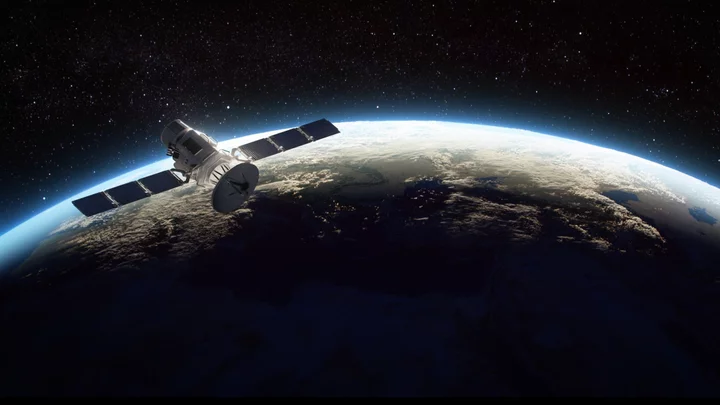The FCC has issued its first-ever fine geared toward preventing space debris.
The agency is requiring Dish Network to pay $150,000 for failing to properly deorbit a broadcast satellite last year. Dish was supposed to have flown its retired EchoStar-7 into a “disposal orbit.” But the satellite ended up traveling “below the elevation required by the terms of its license,” which could have posed “orbit debris concerns,” the FCC says.
“In February 2022, Dish determined that the satellite had very little propellant left, which meant it could not follow the original orbital debris mitigation plan in its license,” the FCC says. “Dish ultimately retired the satellite at a disposal orbit approximately 122 km above the geostationary arc, well short of the disposal orbit of 300 km specified in its orbital debris mitigation plan.”
For perspective, EchoStar-7 originally traveled at a geostationary orbit, putting it about 36,000 kilometers above the planet — far higher than a low-Earth orbiting Starlink satellite. Hence, the EchoStar-7 was supposed to have flown further away from the planet, but it failed to reach a so-called “graveyard orbit.” As a result, EchoStar-7 ended up closer to the operational orbits of other geostationary satellites than the FCC would have liked.
Although the fine was only directed at Dish Network, the US regulator is signaling it’s ready to clamp down on other satellite constellations when necessary. “As satellite operations become more prevalent and the space economy accelerates, we must be certain that operators comply with their commitments,” says FCC Enforcement Bureau Chief Loyaan Egal.
That should bring more regulatory scrutiny to SpaceX’s Starlink, a satellite constellation capable of beaming high-speed internet to users on the ground. The system now spans over 4,800 active satellites, which has sparked concerns the satellites risk causing radio interference, disrupting astronomical observations, and generating space debris.
However, SpaceX built its Starlink satellites to be maneuverable, allowing them to dodge potential collisions with space junk or other satellites. The same satellites are also designed to burn up in Earth’s atmosphere once they’ve been set to retire. Nevertheless, another US regulator, the Federal Aviation Administration, told US lawmakers this month it's worth investigating whether parts of Starlink satellites can survive atmospheric reentry, and thus pose a threat to the public.
“By 2035, if the expected large constellation growth is realized and debris from Starlink satellites survive reentry, the total number of hazardous fragments surviving reentries each year is expected to reach 28,000,” the FAA said in a report, which estimates such debris could kill or injure “0.6” people per year.
As for Dish Network, it says: "As the Enforcement Bureau recognizes in the settlement, the EchoStar-7 satellite was an older spacecraft (launched in 2002) that had been explicitly exempted from the FCC’s rule requiring a minimum disposal orbit. Moreover, the Bureau made no specific findings that EchoStar-7 poses any orbital debris safety concerns.
"Dish has a long track record of safely flying a large satellite fleet and takes seriously its responsibilities as an FCC licensee," it adds.

